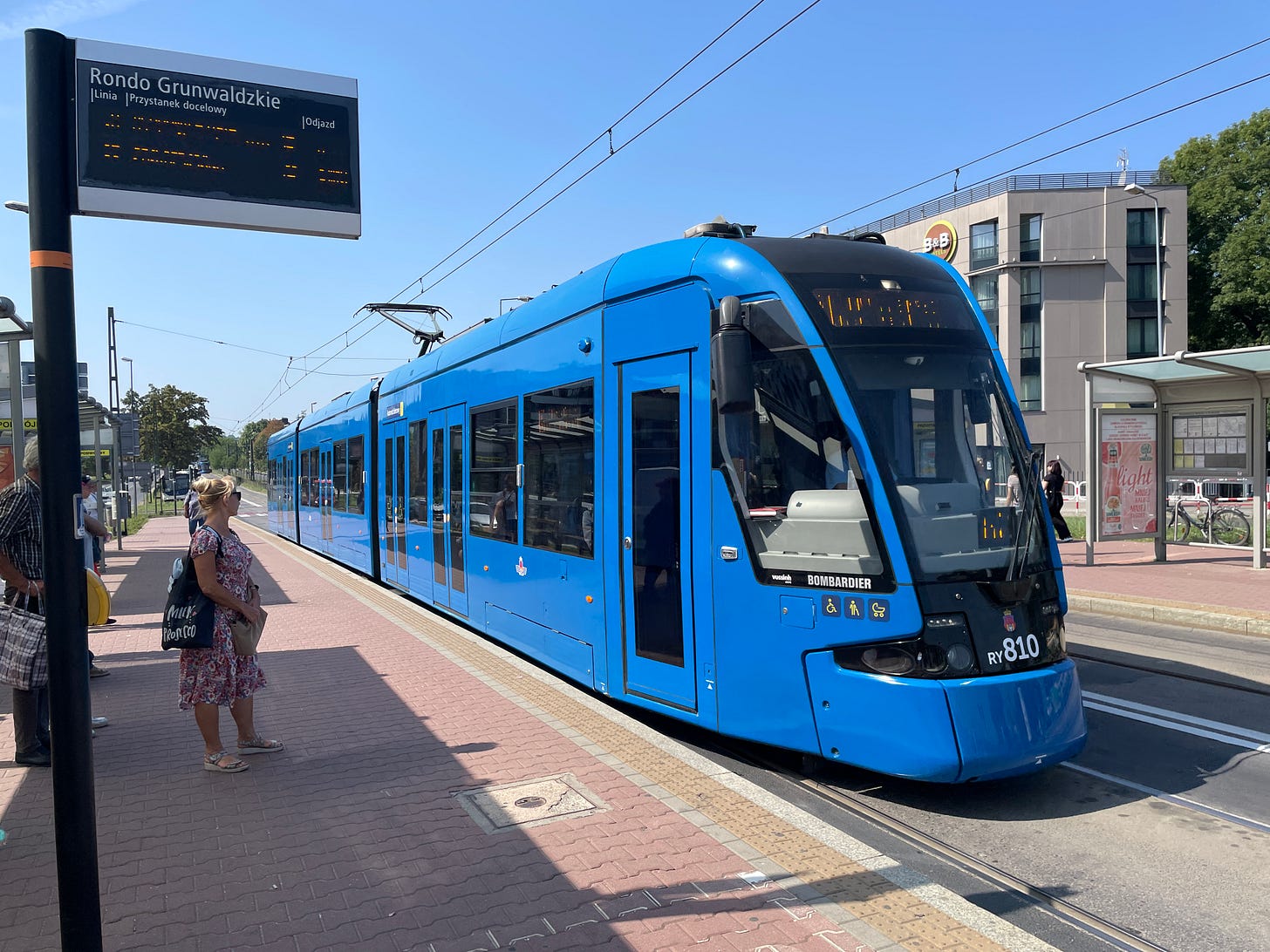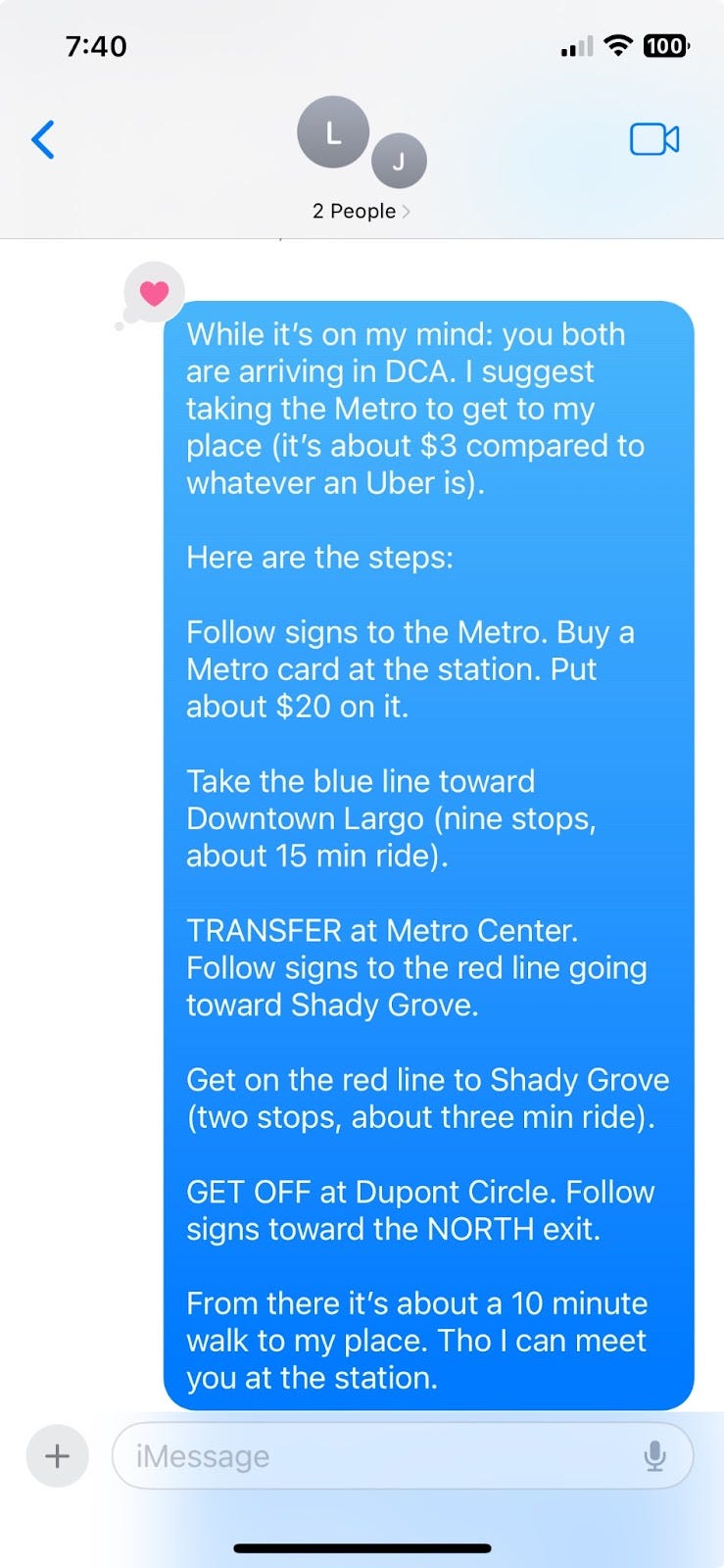One of my favorite things to do in a new city is to take its public transit system — often with mixed results.
Recently that has meant taking trams in Warsaw, buses in Seattle, and Ubers in Little Rock (no reliable public transit options exist in this sleepy Arkansas town).
Though these three cities are as different as they come, the trips reminded me of a common problem with public transit: It's always harder or more complicated to take public transit than it is to drive a car.
And that got me thinking: To get more people to use public transit, we should try to simplify it.
Much confusion around public transit is because of the decentralization of U.S. transit systems: Though you can use the same Uber or Lyft app anywhere in the country, each city has its own separate transit system, all with separate apps and payment structures.
To take a bus in San Diego, for example, I had to download an app, create a log in, verify my email, and manually enter my credit card information — all before even looking at a bus map.
In Kraków, my sister and I battled frustratingly unreliable ticketing machines every time we wanted to board a bus or train.
There is a relatively easy fix to this: Municipalities can retrofit trains, buses, stations, and the like to use tap-to-pay fare systems. These contactless payment systems collect fares directly from credit cards, debit cards, Apple Pay, Google Pay, and even CashApp, without requiring a separate app or payment card.
The most popular example of this already in place is in New York City, the nation’s largest subway system; bus agencies in California are also installing similar systems.
Another issue with public transit confusion is our growing desire for and expectation of door-to-door transit service. As I’ve written before, Uber and Lyft’s popularity stems partially from their convenience.
Because public transit is not designed for a single user but for as many users as possible, public transit is often more of a journey than calling an Uber or hailing a cab. Every time a visitor comes to town I usually send a text like this:
That obviously demands a bit more from riders than simply calling a ride.
But just as with universal payment systems, technology can make public transit routes simpler. Popular apps like Google Maps or Apple Maps include detailed public transit options. Such routes may be more confusing than driving, but they’re also much easier than studying an entire bus route on a website or paper map.
So if these apps already exist, why aren’t more people using them to take public transit?
I think we need to do a better job at communicating how riders can use public transit. That can start with marketing campaigns or information screens in strategically placed public spaces.
Some train stations and bus stops have information screens with up-to-date times of arrival.
Other high-density areas and even newer apartment buildings have information screens that show all the different transit options nearby.
Most of these monitors have time estimates or availability but should also include price and carbon emissions (public transit is almost always the cheapest and most climate-friendly transit option).
Finally, in addition to simplifying public transit, we should complicate car-centric options:
It’s really hard to mess up calling an Uber from an airport, mostly because airports have taken great pains to show you exactly where to get picked up.
But by adding ride-sharing surcharges and deprioritizing pickup spots (e.g., putting them further away than train stations and bus stops), municipalities can get more people to consider public transit.
This is all important because how transportation accounts for the largest chunk of U.S. greenhouse gas emissions, and cars and trucks make up the vast majority of this carbon pollution.
To get people to take more public transit, and therefore use less emissions, we have to offer a viable alternative to car-centric convenience. Simplifying public transit is one place to start.






May I also make a plug for the Transit app, which is a transit- and biking- first wayfinding app! Have used it to lower the new-city friction for myself and others in a way that Google or Apple maps just doesn't.
yes yes yes!!! the reason I take trains and not buses where I live is because buses are confusing as hell, they show up at completely ranodom times, and the ticket system makes NO sense to me. Whereas with trains, its clear when they are coming, buying a ticket to your location is simple as it could be, and its very clearly annouced when you arrive at your station lol.